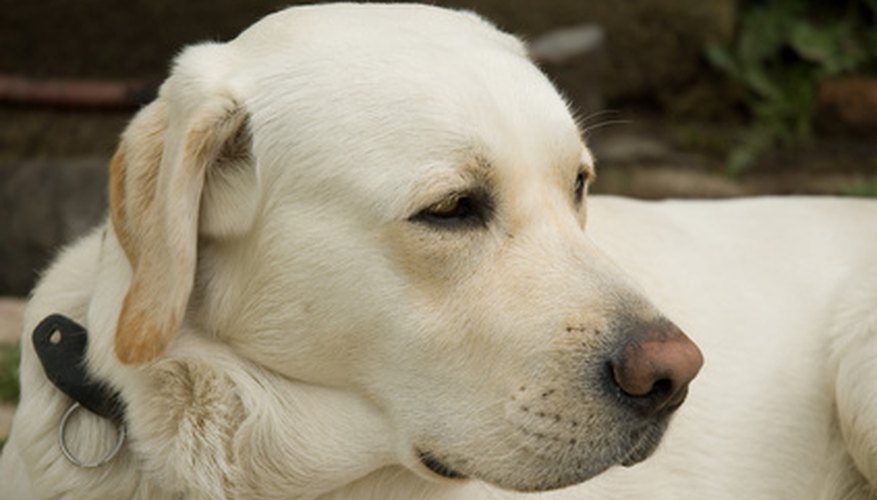If your dog needs eye surgery, you are likely going to face a significant vet bill. Carefully select the veterinary practice that will perform the surgery. While you may prefer a certain doctor, sometimes other practices will do the same procedure for less money.
Types of Eye Surgery
Two of the more common reasons for eye surgery on a dog are cataracts and cherry eye. A cataract is when the lens of the eye acquires a certain level of opacity or it becomes blurred, according to Canine Cataracts Guide. Phacoemulsification is the surgical removal of a cataract. Cherry eye is a condition in which a dog's tear duct gland becomes prolapsed and detached from the rest of his eye, according to VetInfo.
Some conditions may require total removal of the eye. They include lacerations, proptosis (where the eye is forced out of the eye socket), blunt injury to the eye and/or eyelids, foreign body injuries, congenital deformities, cat claw injuries, dog bite injuries, cancer, gunshot pellet wounds and severe head/eye socket injury.
- Two of the more common reasons for eye surgery on a dog are cataracts and cherry eye.
- A cataract is when the lens of the eye acquires a certain level of opacity or it becomes blurred, according to Canine Cataracts Guide.
Cost
The procedure to treat cherry eye typically costs between £195 and £325, but costs will vary among veterinarians. Northwest Animal Eye Specialists of Kirkland, Wash., charges £829 to £1,085 for enucleation (complete removal of the eye), as of June 2010. Cataract surgery can range from £975 to £1,950, according to a 2009 figure from VetInfo. Consult several vets to compare costs.
- The procedure to treat cherry eye typically costs between £195 and £325, but costs will vary among veterinarians.
What the Cost Includes
Most veterinarians include the cost of blood tests and anaesthesia with the surgery fee. Some may also include post-op care and antibiotics if needed. Your vet may prescribe pain medication for your dog. This typically is not included in the cost of the surgery.
- Most veterinarians include the cost of blood tests and anaesthesia with the surgery fee.
How to Pay the Bill
Owners may not be able to pay the entire cost of the surgery out of their pocket right away. Pet insurance may cover part of the bill. If you can't put the bill on a credit card, some veterinary practices offer Care Credit, which will help finance the bill. Sometimes low-cost veterinary clinics will perform procedures on a sliding scale, which allows owners to pay what they can afford.
- Owners may not be able to pay the entire cost of the surgery out of their pocket right away.
- If you can't put the bill on a credit card, some veterinary practices offer Care Credit, which will help finance the bill.
What to Expect
With simple surgeries, such as cherry eye surgery, most dogs will recover in a matter of days. Remember that surgery does not 100% guarantee your dog's vision will be restored. Your vet may recommend your dog wear a cone collar to prevent him from licking or scratching the surgery site. In addition, expect some swelling around the eye and possibly mild discharge. Consult your vet on what to expect as far as recovery from your dog's specific procedure.
- With simple surgeries, such as cherry eye surgery, most dogs will recover in a matter of days.
- Your vet may recommend your dog wear a cone collar to prevent him from licking or scratching the surgery site.
